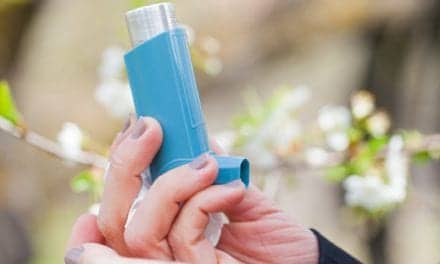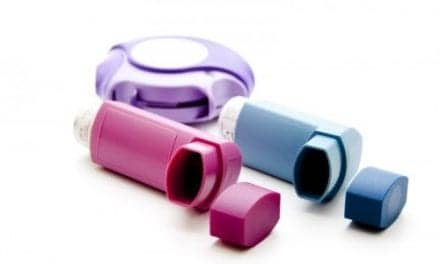Various organizations are dedicated to educating patients and physicians through Web sites, program strategies, and materials development

A standard for patient/physician asthma education was addressed in 1989 when the National Heart, Lung, and Blood Institute (NHLBI) began the National Asthma Education and Prevention Program (NAEPP). NAEPP developed a report on the “Guidelines for the Diagnosis and Management of Asthma,” and distributed it to physicians, medical schools, and other health professionals and organizations, as well as to patients with asthma. The report emphasized the role of inflammation in disease development, noted the importance of objective monitoring of lung function, and stressed the need for establishing partnerships between patients and health care providers through education.
Forming an Alliance
In 1992, the NAEPP sponsored the First National Conference on Asthma Management to encourage implementation of the recommendations in the report, and the continuously updated guidelines are still promoted at national health and medical association meetings and in a variety of journals. In 1998, the NAEPP began to focus on collaborative activities with the many community-based asthma coalitions across the country, launching a Web site through which local asthma coalitions can exchange information. Members of the NAEPP Coordinating Committee—including the Asthma and Allergy Foundation of America (AAFA), the American Academy of Family Physicians (AAFP), and the Allergy and Asthma Network—Mothers of Asthmatics Inc (AANMA)—not only provided input on program strategies and materials development, but also implemented many activities through their organizations. And that implementation of education has had a measurable impact on patient health.
The Washington, DC-based AAFA has more than 120 educational support groups for parents, children, and adults. The format for each group varies, but most groups feature guest speakers who answer questions in an informal setting and share “tips from the trenches” to make life with asthma manageable.
An online catalog of asthma and allergy resources includes patient education program materials, and AAFA’s signature programs include Power Breathing™, Asthma Care Training for Kids, You Can Control Asthma, and the Meeting-in-a-Box series. AAFA also offers continuing education courses for health professionals, and operates a Web site at www.aafa.org, with access to the latest information on asthma and allergies for the public and health professionals. The AAFP also has a Web site, http://aafp.org, featuring video clips on how to identify the triggers of asthma attacks, how to take control of asthma, and what to know about commonly prescribed asthma medicines.
Organizations like the AAFP and AAFA address the basics of asthma education—What is asthma? How do you diagnose it? What is the usual treatment for asthma? How do you manage attacks? What are the triggers? What are the symptoms?—because such knowledge is crucial to asthma management. Other organizations, meanwhile, have focused on creating more expansive, individualized approaches to education.
AANMA
AANMA is a nonprofit group founded by Nancy Sander in 1985 “to end preventable death and suffering due to asthma.” The primary method is through transfer of information, and to that end the group produces a quarterly magazine, Allergy and Asthma Health, puts out “The MA Report” newsletter eight times a year, operates a Web site, and has a full catalog of educational materials.
“The type of materials we have developed really focus on the needs of patients as they express them to us,” says Sander, president of AANMA. “We were founded and staffed by people who either have asthma or allergies themselves or in their families. Each of us has a different story, a different set of circumstances influencing the suffering and pain we endured before getting control of our asthma and allergies.”
Since AANMA recognizes asthma as an individualized illness, it spends a lot of time surveying and resurveying its members to maximize understanding of what they are dealing with on a regular basis. The organization then develops practical tools for families to help with day-to-day aspects of living with asthma and allergies, such as the video “Baby Breath,” designed for infants and toddlers with asthma who use nebulizers.
“Parents were contacting AANMA to ask if there was any other way to give medication to their children, because they were fighting the nebulizers,” Sander says. “We thought if we taught the babies, then the parents would also learn.”
Another tool came from Sander’s daughter Brooke, who grew tired of using standard symptom diaries that did not allow her to track information that was important to her. As a senior in high school, she developed the Asthma Tracker, a daily diary system that keeps track of her questions, and allows her to make notes of things she notices happening as her peak flow changes. With it, she is able to look back to see what works when, why, and how.
“When she went away to college, two physicians made mistakes in her treatment and she wound up becoming very sick,” Sander says. “Thanks to the Asthma Tracker, she could pinpoint the exact times when her health declined, and it was when they didn’t listen. Now she takes the diary along and if they argue with her about what she needs for her care, she points back to those examples.”
Creating programs
Nonprofit organizations are not the only ones focusing on creating a wealth of asthma education materials. Many hospitals and medical centers have realized the importance of this aspect of patient care as well. The National Jewish Medical Research Center, in Littleton, Colo, has had an education plan in effect for 4 years that was spurred by the NAEPP. Patients at the center receive a core education covering what asthma is, its symptoms, triggers, and management.
“NHLBI has done a very nice job of outlining a core curriculum and that was the impetus in our plan,” says Abby Schwartz, RN, director of disease management. “The goal of National Jewish is that we have always believed in the importance of patients being involved with their care and forming a partnership, and being able to manage their condition on an ongoing basis in a collaborative manner.
“We make sure each patient receives education on specific topics during the 1 to 2 years they are involved with disease management,” she says. This includes contact with nurses via the telephone, and attendance at a variety of interactive classes to help patients and families learn self-management techniques. The center also produces and distributes a series of “Understanding Booklets” on asthma, as well as other respiratory health issues; “The Asthma Wizard Activity Book” is specifically designed for children ages 5 to 12.
“We educate adults, parents, adolescents, and children under the age of 10, and we try to customize education so that it is appropriate for each age level. The way to motivate an adolescent is different from the way to motivate an adult,” Schwartz says.
In fact, though adolescents are sometimes seen as difficult to motivate, Karen Fulster, RN, care manager at National Jewish, says they actually are “more open because they are in education mode anyway.
“They tend to listen to teachers more than their parents, and nurses can have a good impact because they are third parties and parents don’t have to get in the middle of it,” says Fulster, who mainly works with adolescents at the center. “The big issue for adolescents is that they don’t want to feel different from their peers. They’re embarrassed to use peak flow meters, and take their inhalers in front of peers.
“If they have a good group of friends, they should be able to show them why they take the medications, and carrying medicine with them is very important at this age,” she says. “If they have a lot of pills to take, we advise them to get pill boxes and prepack them for a week at a time. This way the parents will know when to reorder before they run out.
“I also teach them that if they are having problems, they should tell their parents,” she says. “And since a lot of times parents aren’t sure if they are taking their medication, they should keep a checkoff list in a place where their mother can easily see it so she does not have to spy on them directly.
“Most of all, it’s important to praise them a lot, and a sense of humor works well because it helps them learn,” she continues. “Rewards should be given for compliant kids. It’s a lot to do when kids feel different from everyone else.”
“It’s always important to assess what patients already know and educate at their level,” Schwartz says. “And even when educating adults, it’s important to choose your goals and limit them at each conversation. An adult learner will remember only up to three main points in each conversation.”
“Patient education and treatment plans must be individualized. We are not carbon copies of each other,” Sander agrees. “While medications may be very standardized, certainly the way they are used is very individualized.”
Promoting Awareness
The NAEPP recognized the individualized nature of asthma and implemented a number of media campaigns to promote awareness targeted at special risk groups, such as African Americans and Hispanics. Asthma education has also been addressed outside of an American frame of reference in “Management of Asthma in Adults—A Guide for Low Income Countries,” produced by the International Union Against Tuberculosis and Lung Disease.
In fact, the Global Initiative for Asthma (GINA) was created in collaboration with the NHLBI, the National Institutes of Health, and the World Health Organization to help health care professionals and public health officials around the world reduce asthma prevalence, morbidity, and mortality. It prepares scientific reports on asthma management and prevention, encourages dissemination and adoption of the reports, and promotes international collaboration on asthma research.
Communities Get Involved
Large organizations are not the only sources of educational material. John Wolfe, RRT, is one respiratory therapist who is working on getting an asthma education program started within his community in Fort Collins, Colo. Wolfe has been an RT for 25 years, and is a volunteer with the American Lung Association and the Parents of Allergic and Asthmatic Children (PA/AC). He says one of the needs that the local PA/AC group identified was for a comprehensive asthma education program in its community.
“Various constraints make it nearly impossible to do a truly comprehensive asthma education within a hospital, physician, or even home care setting, and asthmatics really need to learn about managing their diseases, especially day to day rather than crisis to crisis. There are a lot of distractions in these environments, and the opportunity for four 2-hour classroom sessions is just not available, nor generally paid for,” Wolfe says.
Wolfe envisions establishing a program he calls “Taming the Tiger,” because “I see asthma as a tiger in the woods, just waiting to pounce on the asthmatic,” he says. “Sometimes you can tell that tiger is there, but you’re not sure what to do about it. With asthma education, people can stay one step ahead of exacerbation.”
Wolfe is currently working on getting his program together and installed in a community environment, but as a respiratory therapist, his input is already seen as invaluable by the larger institutions devoted to asthma education and management.
Conclusion
Such devotion to educating patients about their illness is making lives better for asthmatics, because educated patients have fewer visits to the doctor and to emergency departments, and thus fewer deaths due to their illness.
AANMA conducts a lot of surveys on its effectiveness, and periodically asks its members how many of them are using specific types of medication.
“It turned out that 97% of adults and 96% of pediatric patients use an inhaled corticosteroid,” Sander says. “That’s amazingly higher than the national average, but it’s not because they have such severe asthma. It’s because they are relatively aggressive with their treatment. That’s what they learn to do through our organization.
“We receive letters all the time thanking us for the information we provide. We can not only tell people that there is hope, we help them achieve their hopes by giving them tools to make their own lives better.”
Liz Finch is a contributing writer for RT Magazine.










